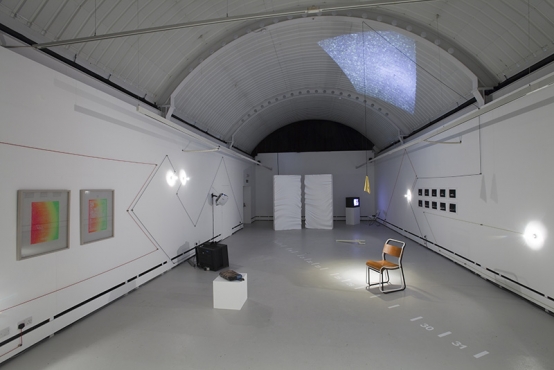A central principle of astrology is integration within the cosmos. The individual, Earth, and its environment are correlated with each other as one; time and space is equivalent. Changes observed in the heavens are therefore reflective of similar cycles of change observed on earth and within the individual. As above, so below; as below, so above. There is a symmetry in the individual as a microcosm and the celestial environment as a macrocosm.
There are a number of parallels between classical astrology and John Latham’s Time Base theory. Across the centre of the gallery space is a reproduction of the time base spectrum from a performance of Latham’s The Government of the First and Thirteenth Chair. Alongside are reproductions of the original 1978 performance at Riverside Studios. The spectrum is made up of 36 bands, from ‘least event’ (1) to ‘universe as event’ (36). The story of humanity occupies the 13 bands from 17 - 30. Human experiences lower down the spectrum are baser and more animalistic, higher numbers represent more enlightened experience. Two stacked chairs are positioned on the time base, one painted black, represents the least event. The other, painted white and stacked on-top, represents the universe as event. The two chairs stacked illustrate Latham’s system of understanding the universe.
